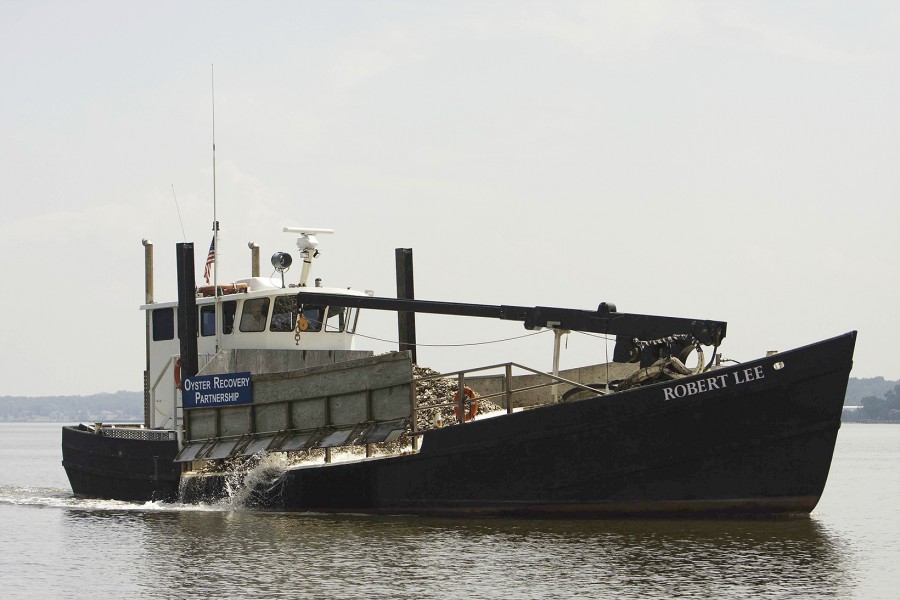Local restaurant aids chesapeake oyster recovery efforts
The Robert Lee restores oyster habitats in the Bay with recycled oyster shells.
October 29, 2015
The next time you sit down to enjoy a fresh seafood meal, take a moment to consider the work that allows you to continue to enjoy your meal.
The Grilled Oyster Company in Cabin John has been working with the Oyster Recovery Partnership (ORP) since 2012, and has been a part of the Shell Recycling Alliance (SRA) since 2013. Grilled Oyster Company Owner Rick Dugan reached out to ORP to begin working with them.
“I knew about their mission and what they do,” Dugan said. “The shells go back to Horn Point and help the oyster population.”
Restaurants like The Grilled Oyster Company help ORP by returning natural oyster shells to the laboratory. The shells are used as material to create new oyster beds in the Chesapeake Bay.
“Natural oyster shell is the best material on which to raise new oysters and restore oyster reefs,” ORP Marketing Manager Kate Cwiek said. “ORP developed the Shell Recycling Alliance (SRA) to save and reuse this extremely limited natural resource.”
The Grilled Oyster Company has provided over 800 bushels of shells to ORP, since 2013.
In addition to its partner restaurants, ORP works with the U.S. Army Corps of Engineers and the University of Maryland Center for Environmental Science (UMCES), home to the Horn Point Laboratory Oyster Hatchery in Cambridge, MD.
“ORP relies on the hatchery to produce oyster larvae and the resulting spat on shell that is used to rebuild the oyster reefs,” Cwiek said. “The U.S. Army Corp of Engineers builds the underwater substrate on which the new oysters will be planted and grow.”
According to oysterrecovery.org, ORP’s website, the organization and its partners have planted more than five billion oysters on 1,600 acres of oyster reefs and recycled 30,000 bushels of shells.
Oysters are important to the Chesapeake Bay because they are a filter-feeder, meaning that they feed by taking in water and pumping it through their gills. Food particles get trapped inside for the oyster to eat, but in this process the oysters also filter water and improve water quality.
Improved water quality means improved living conditions for many species native to the Chesapeake Bay, such as the Blue Crab and Striped Bass, which are important to the economy of the Chesapeake Bay watershed.
According to the Chesapeake Bay Foundation’s website, the Chesapeake Bay provides approximately one-third of the nation’s blue crabs. Between 2000 and 2009, an average of 55 million pounds of blue crab were caught each year. In 2009, the value of the bay-wide harvest was worth $78 million. Striped bass are profitable to the economy both commercially and recreationally. Striped bass fishing contributes about $500 million to the economy annually.
Actions throughout the watershed directly impact the health of the Chesapeake Bay, which in turn affects the economy created by the bay.
“Some people do not realize how large the watershed is,” Dugan said. “Pesticides in your yard 50 miles from the bay are damaging the water.”
According to chesapeakebay.net, the Chesapeake Bay watershed includes over 64,000 square miles. New York, Delaware, Pennsylvania, Virginia, West Virginia, Maryland and the District of Columbia are all a part of the watershed.
“All of this wouldn’t be possible without the support of individuals, restaurants, and seafood distributors that regularly recycle shell,” Cwiek said. “If you dine out or buy seafood, please support businesses that are members. Citizens can also drop off shells for recycling at many landfills.”


